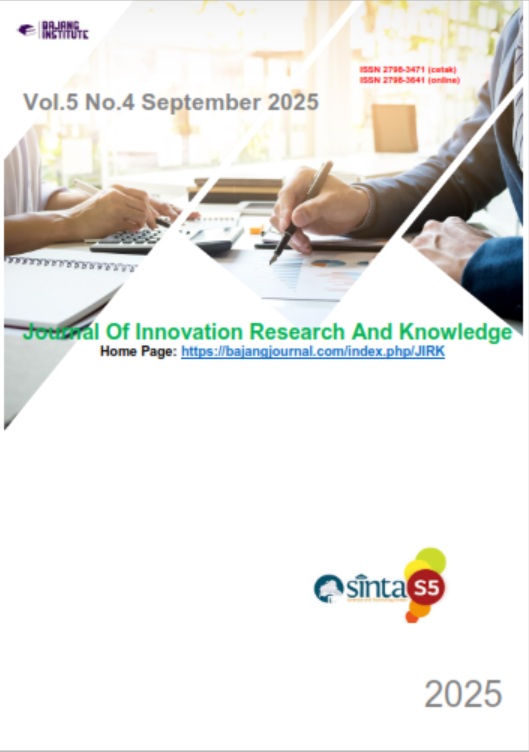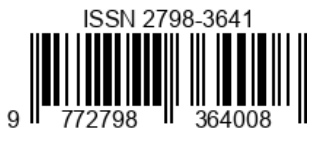ANALISIS FRAMING, PEMBERITAAN MEDIA TERHADAP PEMASANGAN BENDERA ONE PIECE DI HARI KEMERDEKAAN INDONESIA
DOI:
https://doi.org/10.53625/jirk.v5i4.11075Abstract
Pemasangan bendera Jolly Roger dari serial animasi jepang One Piece menjelang peringatan Hari Kemerdekaan Republik Indonesia ke-80 memunculkan kontroversi di ruang publik, terutama terkait batas antara kebebasan berekspresi dan perlindungan terhadap simbol negara. Penelitian ini bertujuan untuk menganalisis framing pemberitaan tiga media daring nasional yaitu Kompas, Kumparan, dan Tempo terhadap isu pengibaran bendera tersebut. Dengan pendekatan kualitatif dan metode analisis framing, penelitian ini mengkaji enam artikel berita dari ketiga media berdasarkan lima isu utama: kebebasan berekspresi, ancaman persatuan, protes politik, legalitas hukum, dan distraksi makna kemerdekaan. Hasil analisis menunjukkan bahwa Kompas menekankan aspek ancaman terhadap persatuan dan stabilitas nasional, Kumparan mengedepankan legalitas berdasarkan peraturan nasional dan internasional, sedangkan Tempo menyoroti dimensi protes politik dan kebebasan berekspresi. Temuan ini mencerminkan keberagaman konstruksi narasi media dalam menyampaikan isu yang sensitif secara simbolik dan ideologis, serta mengungkap dinamika antara agenda media, persepsi publik, dan identitas nasional. Penelitian ini berkontribusi pada pemahaman peran media dalam membentuk opini publik terkait isu kebudayaan populer dan nasionalisme
References
Acosta, M., Lassi, A., & Demirdjian, S. B. (2022). Las elecciones presidenciales de 2019 en Argentina: Un análisis de la agenda y el proceso de enmarcado de la prensa de referencia. OBETS: Revista de Ciencias Sociales, 17(1), 17-30.
Adam, S., Reber, U., Häussler, T., & Schmid-Petri, H. (2020). How climate change skeptics (try to) spread their ideas: Using computational methods to assess the resonance among skeptics’ and legacy media. PLoS ONE, 15(10), e0240089. https://doi.org/10.1371/journal.pone.0240089
Berk, N. (2025). The impact of media framing in complex information environments. Political Communication, 1-17.
Bolsen, T., & Shapiro, M. A. (2017). Strategic Framing and Persuasive Messaging to Influence Climate Change Perceptions and Decisions. https://doi.org/10.1093/acrefore/9780190228620.013.385
Boukes, M., Boomgaarden, H. G., Moorman, M., & De Vreese, C. H. (2015). Political news with a personal touch: How human interest framing indirectly affects policy attitudes. Journalism & Mass Communication Quarterly, 92(1), 121-141.
Choi, S. (2023). Temporal Framing in Balanced News Coverage of Artificial Intelligence and Public Attitudes. Mass Communication and Society, 27(2), 384–405. https://doi.org/10.1080/15205436.2023.2248974
Chung, M. Y., Lessman, J. R., & Fan, M. (2014). Framing the Nuke: How news media among countries in the Six-Party talks framed North Korea's nuclear test. North Korean Review, 22-38.
Comstock, G., & Scharrer, E. (2005). The psychology of media and politics. Academic Press.
De Vreese, C. H., Boomgaarden, H. G., & Semetko, H. A. (2011). (In) direct framing effects: The effects of news media framing on public support for Turkish membership in the European Union. Communication research, 38(2), 179-205.
Dursun, A. D., & Tunç, A. (2024, July). Mental Health News Coverage in Turkish National Newspapers with Respect to Episodic and Thematic Framing: A Retrospective Content Analysis. In International Conference on Computational Science and Its Applications (pp. 59-71). Cham: Springer Nature Switzerland.
Feick, L., Donnay, K., & McCabe, K. T. (2021). The subconscious effect of subtle media bias on perceptions of terrorism. American Politics Research, 49(3), 313-318.
Hassell, H. J., & Wlezien, C. (2025). Public opinion and the news: Polls and journalists’ perceptions of issue importance. Research & Politics, 12(1), 20531680251314012.
Hoewe, J., & Barton, J. (2024). News bias perceptions as impacted by source cues, content cues, and media bias ratings. Communication Monographs, 91(4), 544-563.
Justwan, F., Baumgaertner, B., Carlisle, J. E., Clark, A. K., & Clark, M. (2018). Social media echo chambers and satisfaction with democracy among Democrats and Republicans in the aftermath of the 2016 US elections. Journal of Elections, Public Opinion and Parties, 28(4), 424–442. https://doi.org/10.1080/17457289.2018.1434784
Kim, K. (2019). The hostile media phenomenon: Testing the effect of news framing on perceptions of media bias. Communication Research Reports, 36(1), 35-44.
Kouarfaté, B. B., & Durif, F. (2023). Understanding Consumer Attitudes toward Cultured Meat: The Role of Online Media Framing. Sustainability, 15(24), 16879. https://doi.org/10.3390/su152416879
Kunkel, D., Smith, S., Suding, P., & BIELY, E. (2006). Informative or Not? Media Coverage of Child Social Policy Issues. In Indicators of Children's Well Being: Understanding Their Role, Usage and Policy Influence (pp. 173-191). Dordrecht: Springer Netherlands.
Li, D. ., Lin, Q. ., Nor, N. H. M. ., & Tan, K. H. . (2025). Framing war in the age of algorithmic mediation: A comparative multimodal analysis of AFP, reuters, and AP’s coverage of the Russo–Ukrainian war. International Journal of Innovative Research and Scientific Studies, 8(3), 3058–3065. https://doi.org/10.53894/ijirss.v8i3.7165
Liu, B., & Wei, L. (2018, June). Reading machine-written news: Effect of machine heuristic and novelty on hostile media perception. In International Conference on Human-Computer Interaction (pp. 307-324). Cham: Springer International Publishing.
Mendelsohn, J., Budak, C., & Jurgens, D. (2021, January 1). Modeling Framing in Immigration Discourse on Social Media. https://doi.org/10.18653/v1/2021.naacl-main.179
Mersey, R. D., Malthouse, E. C., & Calder, B. J. (2012). Focusing on the reader: Engagement trumps satisfaction. Journalism & Mass Communication Quarterly, 89(4), 695-709.
Miller, B. M., Xu, Q., & Barnett, B. (2016). Commenter anonymity affects reader perceptions. Newspaper research journal, 37(2), 138-152.
Morstatter, F., Corman, S. R., Wu, L., Yavanoglu, U., & Liu, H. (2018). Identifying Framing Bias in Online News. ACM Transactions on Social Computing, 1(2), 1–18. https://doi.org/10.1145/3204948
Muñiz, C., & Echeverría, M. (2020). Framing effects in experimental realism designs: Frame consumption and political engagement in the 2018 Mexican election campaign. Profesional de la Información, 29(6).
Nelson, T. E. (2019). Emphasis Framing and Political Decision Making. https://doi.org/10.1093/acrefore/9780190228637.013.965
Nguyen, D., & Hekman, E. (2022). The news framing of artificial intelligence: a critical exploration of how media discourses make sense of automation. AI & SOCIETY, 39(2), 437–451. https://doi.org/10.1007/s00146-022-01511-1
Odijk, D., Burscher, B., Vliegenthart, R., & De Rijke, M. (2013, November). Automatic thematic content analysis: Finding frames in news. In International Conference on Social Informatics (pp. 333-345). Cham: Springer International Publishing.
Oelrich, S., & Siebold, N. (2024). Media framing in Wirecard’s fraud scandal: Facts, failures, and spying fraudster fantasies. Critical Perspectives on Accounting, 100, 102755. https://doi.org/10.1016/j.cpa.2024.102755
Ophir, Y., Walter, D., Massignan, V., Neurohr, M., & Forde, D. K. (2021). News media framing of social protests around racial tensions during the Donald Trump presidency. Journalism, 24(3), 475–493. https://doi.org/10.1177/14648849211036622
Peterson, E., & Allamong, M. B. (2021). The Influence of Unknown Media on Public Opinion: Evidence from Local and Foreign News Sources. American Political Science Review, 116(2), 719–733. https://doi.org/10.1017/s0003055421001234
Sheehan, I. S. (2013). Challenging a Terrorist Tag in the Media: Framing the Politics of Resistance and an I ranian Opposition Group. Digest of Middle East Studies, 22(2), 229-261.
Shen, F., & Edwards, H. H. (2005). Economic individualism, humanitarianism, and welfare reform: A value‐based account of framing effects. Journal of Communication, 55(4), 795-809.
Spinde, T., Kreuter, C., Gaissmaier, W., Hamborg, F., Gipp, B., & Giese, H. (2021, September). Do you think it's biased? how to ask for the perception of media bias. In 2021 ACM/IEEE Joint Conference on Digital Libraries (JCDL) (pp. 61-69). IEEE.
Tewksbury, D., & Riles, J. M. (2018). Framing in an interactive news environment. Doing News Framing Analysis II, 137-162.
Vraga, E. K., & Edgerly, S. (2023). Is that news for me?: Defining news-ness by platform and topic. In News quality in the digital age (pp. 49-66). Routledge.
Vultee, F., Burgess, G. S., Frazier, D., & Mesmer, K. (2022). Here’s what to know about clickbait: Effects of image, headline and editing on audience attitudes. Journalism Practice, 16(1), 1-18.
Waddell, T. F. (2019). Can an algorithm reduce the perceived bias of news? Testing the effect of machine attribution on news readers’ evaluations of bias, anthropomorphism, and credibility. Journalism & mass communication quarterly, 96(1), 82-100













